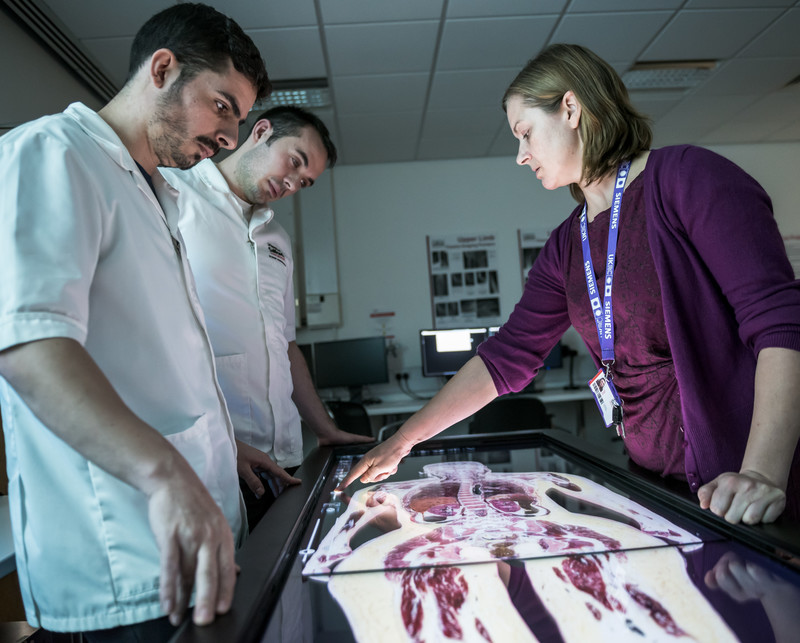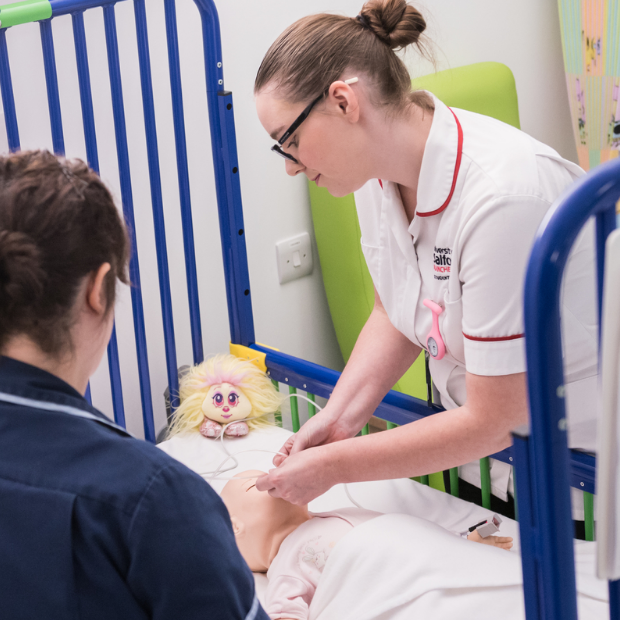Real world learning
Our facilities reflect real working environments that enable our students develop their skills under supervision, while preparing to confidently enter the workplace.
Digital Imaging Suite

The Digital Imaging Suite supports the teaching of radiographic skills. The x-ray room contains equipment that is of a similar standard and function to equipment used in clinics. This allows students to gain skills in radiographic technique before starting their clinical blocks.
The room also contains a mobile fluoroscopy unit used mainly for project work, and a dedicated ultrasound unit for undergraduate and postgraduate study.
Medical imaging is a highly technical diagnostic tool and developments in technology are constantly being made. We have recently invested £55,000 to purchase and install an Agfa Computed Radiography facility in the imagine suite. This brings the image processing capability into the 21st century and will enable us to prepare students for their future in digital imaging.
Healthcare Simulation Suite

Housed in the Mary Seacole building, our state of the art healthcare simulation suite was designed by architects specialising in modern healthcare environments. It offers the best facilities in the North West for students to learn the practical skills associated with health and social care. As the benefits of simulation become clearer, the suite is increasingly in use by other university departments such as social work, psychology and criminology for teaching, training and research purposes.
Within the suite there are a number of hospital rooms that can be used for a range of scenarios such as three-bedded adult bay, two-bedded children's bay, two side rooms, treatment room, day room, bathrooms, midwifery labour room and midwifery home room.
The suite also features nine human patient simulator manikins which are extremely advanced and have a number of realistic functions including palpable pulses, breath, heart and bowel sounds.
Immersive simulation room

Our immersive simulation room allows users to be transported to any environment without having to leave the suite. The technology combines a series of cameras which project realistic images onto the walls, with audio equipment to transform the space into anything from the back of an ambulance to a nightclub, prison cell or family home.
The suite is fully fitted with an audio-visual system which allows scenarios to be streamed, recorded and played back. It is a discrete, multi-camera and microphone system through which different views (including close-ups of procedures) can be achieved. Through advanced audio, a voice can be provided for manikins in response to the user’s interactions and clinical interventions.
Rehabilitation flat

The Rehabilitation Flat is a realistic environment used by students to simulate real-world situations.
It replicates the scene of a community visit where occupational therapists work alongside service users to increase their levels of independence using adapted equipment, new techniques, energy saving devices or other interventions. The bedroom and bathroom are fitted with ceiling track hoists to demonstrate safe transfers and give students valuable practice in a safe and supportive learning environment.
The kitchen is used for group baking and kitchen assessment sessions and the bedroom has a high seat chair, a raised bed and commode to really immerse students in personal care in the bedroom.
This simulation area attempts to mirror a real-life home environment model while allowing a variety of simulation techniques to be used effectively. The flat is fitted with cameras that allow for a structured debrief method through video-facilitated feedback. This approach is proven to be most effective in increasing response time and clinical skill acquisition for undergraduate healthcare students (Chronister and Brown, 2012).
In addition to this, the updated simulation environment allows for research through the introduction of technological enhancement.

